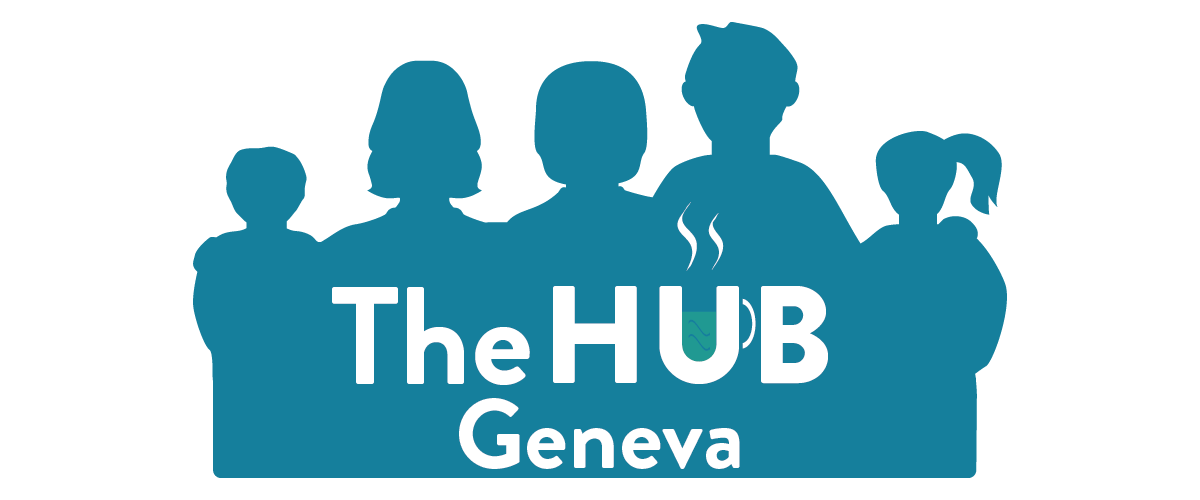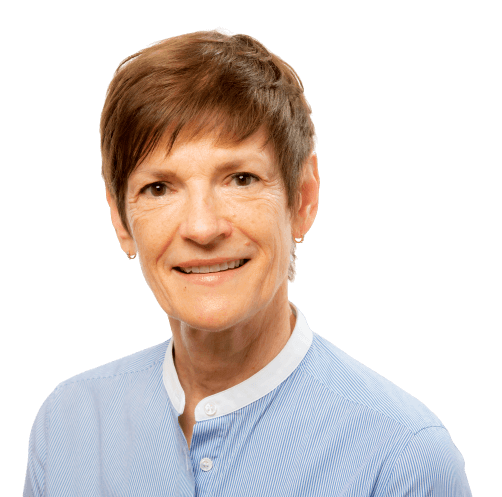Therese Desorbay first started living in Switzerland three decades ago. Now living in Nyon, she reflects on how she found arriving in Geneva as a new Mum, as well as how she came to forge an evolving professional life for herself along the way.
“With a 3-month old in our arms we landed in Geneva from the USA almost 30 years ago: a new environment and a foreign language to conquer, whilst still trying to navigate the huge life transition of becoming a parent.
Social groups were a lifeline and were an opportunity to create a local extended family. A move to neighbouring France as “frontaliers” and then expatriations to England and Oman have since made for rich experiences and enabled undoubted growth. I would say the first expatriation is the hardest…. after a few you actually welcome a new adventure!
For me staying at home was my biggest challenge as I had been active and working up until a few months before our first son’s birth. So once we settled into our daily rhythm, I tasked myself with first improving my French. I knew that reaching a level sufficient to allow me to work as a nurse would take time, so I asked myself what I could do in the meantime.
I had always had an interest in health and through my work as a nurse I had seen how complementary therapies and emotional support often enhanced the healing process. Therefore, I began to explore some of these therapies and enrolled in introductory courses in homeopathy and reflexology. Whilst they were interesting, what really clicked for me was when I attended an open day on craniosacral therapy and was able to feel the cranial pulse. From that point I was hooked and took the next steps to train and gain certification. This gave me the ability to practice and learn as we continued to move.
As an expat I always viewed my primary job as managing the family, but it was so beneficial to have something that I did outside the family and connected me to others in the community. My husband and kids wholeheartedly accepted and respected my “side job” and helped out when I was working. Arriving somewhere new there were always administrative hoops to jump through to get started, but once the framework was in place, there was never too much to maintain.
Many families with newborns seek out craniosacral therapy as it is a gentle form of body work that babies and young children respond very well to. However, I found working so directly with babies and children exposed me to the entire breadth of their communication.
Eager to learn more, I explored the field of pre and perinatal psychology.
Have you ever considered your child’s birth, from their perspective? As parents we all remember the experience of our baby’s birth and each parent has their own story to tell of their experience. Often the focus is on the mother and the events leading up to the birth and the birth process itself. Partners too have their own version, and in the weeks and months following birth, parents’ stories get shared and listened to, as baby is welcomed to living outside the womb.
But often we don’t consider that the baby also has a story to tell and this may be a markedly different one from that of their parents. I’ve learned that they have their own birth experience and their own story; we just have to learn to listen and observe a little differently.
Thought-provoking?
Over the past 50 years the field of birth psychology has been developing based on studies by researchers and clinicians from many different disciplines showing that our time in the womb and our experience of birth is remembered and has lifelong consequences. We know babies and young children can’t relate to us explicitly by talking, as cognitively, their brains are still developing. Their experience instead is held implicitly in their bodies – in the sensations they feel, which are immediate and in the moment. Hunger or a wet diaper will be signalled usually by baby crying or being restless until the sensation is addressed. But what about an experience they may be holding of their birth…. where they may have been stuck or in pain?
“Memory crying” as it has been termed is when the baby is experiencing sensations and images that relate to an earlier experience- like during the birth where baby got stuck and it became overwhelmed. This type of crying is associated with repetitive body movements such as frantic pushing or paddling of the legs or pulling at the ears or swiping an area of the head over and over.
Introducing families to the concept of memory crying can be so rewarding, allowing them to consider that their child may be communicating things other than simple needs. And starting to think in this way, allows me to give parents the opportunity to adapt their response. Although we all have a different tolerance to a baby’s crying and support from family, community and healthcare professionals is essential.
Are you interested in learning more or do you need help with trying to understand what your baby or child is trying to tell you? Get in touch with me at: [email protected] or my website“
Thanks to Therese for sharing her story from nursing to craniosacral therapy and beyond! We love to hear how people moving to Geneva find their individual paths to settled, fulfilled lives en Suisse.

